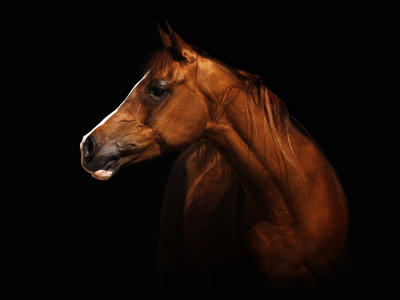
136,000 horses were shipped from Australia to help in the war.
All Creatures Great and Small
Not surprisingly, All Creatures Great and Small looks at animals.
The First World War called upon many millions of men to do their duty but animals had their own part to play. Find out more about the roles our furred and feathered friends played during the conflict.
1 .
136,000 horses were shipped from Australia to help in the war. How many of these returned after the fighting was over?
1 horse
100 horses
1,000 horses
10,000 horses
13,000 Australian horses survived the war but due to quarantine restrictions they could not be shipped back. 2,000 were killed and the remaining 11,000 were sold. One, a horse named Sandy, was returned at the request of Australia’s Defence Minister
2 .
The first British shot of the war in France was fired by a cavalryman, on what date?
July 22nd 1914
August 11th 1914
August 22nd 1914
September 11th 1914
It was fired by Edward Thomas, of the 4th Royal Irish Dragoon Guards, during a patrol in the build up to the Battle of Mons
3 .
Pigeons were so important to the war effort that killing or wounding a homing pigeon became an offence. What was the punishment?
Six months' imprisonment
One month's imprisonment
£50 fine
£10 fine
Alternatively a fine of £100 could be paid. This in a time when the average weekly wage was around 17 shillings (85p) for 52 hours work
4 .
Some of the dogs used were called ‘Summer Dogs.’ Why was this?
Because they were born in the summer
Because they were happy
Because they were warm
Because they were mongrels
They were called Summer Dogs because they were ‘Summer this and Summer that’ i.e. mongrels. Another name for them was ‘Heinz Terrier’ because they had '57 varieties' in them
5 .
On 24th August 1914 a cavalry regiment, the 9th Lancers, were ordered to charge against German infantry and guns. Two hundred and fifty men were lost, together with how many horses?
200 horses
250 horses
300 horses
350 horses
The leader of the regiment, David Campbell, believed it would be better to fight on foot but he obeyed his orders and charged. As well as being an army officer Campbell was a successful sportsman. He rode the winning horse in the 1896 Grand National
6 .
One pigeon named Cher Ami delivered 12 important messages during the Battle of Verdun. How was she rewarded for her work?
She was given extra bird seed
She was given a mate
She was given a carpet for her coop
She was given a medal
She was awarded the Croix de Guerre. On her last mission, in October 1918, Cher Ami delivered a message despite having been shot
7 .
At the beginning of the war cavalry units were considered an essential part of an army, but horses' vulnerability to modern machine guns led to them eventually being replaced by what?
Jeeps
Mules
Aeroplanes
Tanks
The use of traditional cavalry charges during the war resulted in the loss of many troops and horses to the enemy's machine guns. The long era of the horse in battle was coming to an end
8 .
Because of the lack of horses, which animals were taken from German zoos and put to work?
Zebras
Elephants
Giraffes
Rhinos
Elephants were taken from all the major zoos and circuses in Germany to help in the war effort. There are also reports of elephants working in Britain at the same time
9 .
Dogs were used to deliver messages which were placed inside tins. How did the dogs carry these tins?
Tied to their tails
Attached to their collars
In their mouths
Strapped to their backs
The dogs were identified by a scarlet collar. It was a serious offence to stop a dog in its line of duty
10 .
One role of dogs during the war was that of ‘Casualty Dog.’ These were trained to find the wounded on battlefields. By what other name were they known?
Angel Dogs
Nurse Dogs
Mercy Dogs
Doctor Dogs
Mercy Dogs were equipped with medical supplies so that injured soldiers could tend to their own wounds. More seriously wounded men had the company, in their final moments, of Mercy Dogs who waited with them as they died
**Unlimited Quizzes Await You! 🚀**
Hey there, quiz champ! 🌟 You've already tackled today's free questions.
Ready for more?
Ready for more?
🔓 Unlock UNLIMITED Quizzes and challenge yourself every day. But that's
not all...
not all...
🔥 As a Subscriber you can join our thrilling "Daily Streak" against other
quizzers. Try to win a coveted spot on our Hall of Fame Page.
quizzers. Try to win a coveted spot on our Hall of Fame Page.
Don't miss out! Join us now and keep the fun rolling. 🎉
**Unlimited Quizzes Await You! 🚀**
Hey there, quiz champ! 🌟 You've already tackled today's free questions. Ready for more?
🔓 Unlock UNLIMITED Quizzes and challenge yourself every day. But that's not all...
🔥 As a Subscriber you can join our thrilling "Daily Streak" against other quizzers. Try to win a coveted spot on our Hall of Fame Page.
Don't miss out! Join us now and keep the fun rolling. 🎉







